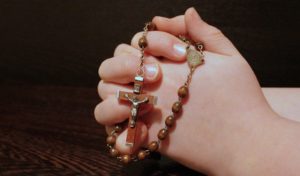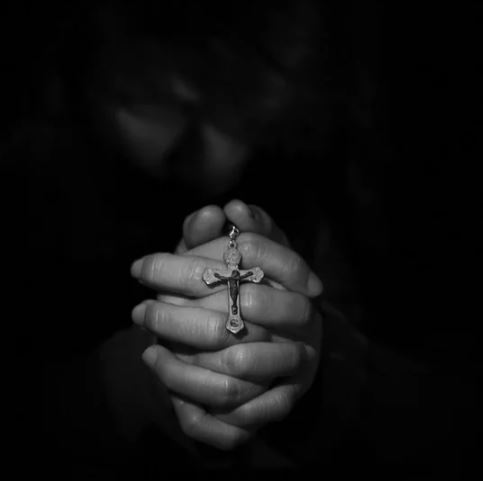The popular image of prayer found in Western culture is that of a person kneeling with their hands clasped before them and their heads bowed as they mentally commune with the Divine. At times, this image may include the lighting of candles and some verbalization, but the kneeling petitioner remains the most prevalent of cultural images associated with prayer. Before looking at a sampling of techniques that can be used to build one’s spiritual life, it is important to first consider what exactly is prayer.
The Merriam-Webster dictionary defines prayer as an address (as a petition) to God or a god in word or thought. Many people engage in prayer in a ritualized context, such as a church or when they recite the rosary (a Catholic set of prayers recited while handling a set of special rosary beads). Prayer is also common in a spontaneous context. In addition to ritual and spontaneous prayer, there is also habitual prayer. Habitual prayers are different from ritualized prayers because they do not have a specific ritual associated with them or require one to be in a specific location to do so. The act of ‘saying grace’ is a common habitual prayer, as is the act of saying a prayer upon retiring for the night.
Prayer can be done in many different fashions.
The techniques can be generally classified as active or passive. Active prayer requires the person who is engaged in it to be doing something while reciting or mentally concentrating upon the formula of the prayer. Passive prayer simply requires the person who is engaged in prayer to be still and to recite or mentally concentrate upon their petition. There are also techniques for prayer that incorporate elements of both.
Prayer Journal
Prayer journals are useful tools for building one’s spiritual life. Within the pages of the journal, you record your petitions and your ‘side of the conversation’ with the Divine. Some choose to include in their prayer journal inspirational verses and quotes. Others choose to note how their prayers may be answered or any synchronous events that give evidence of Divine attention upon the matter.
Prayer journals do not need to be strictly written medium. Digital collages, sketches, and musical recording can still serve as a prayer journal, as long as it is done with clear intent to communicate to the Divine your needs, feelings, or any other vital matters that you wish to ‘discuss.’
Prayer Beads
Some of the most famous examples of prayer beads can be found in Western religious art from the Catholic faith. The rosary is not the only form of prayer beads that one can have access too. Prayer beads are found within the traditions of Islam, Buddhism, and Hinduism, to name a few faiths. The use of prayer beads is fairly simple and easily accessible to almost anyone with beads and an intent to pray. The beads serve a dual function of helping the person who is praying to count their repetitions of a given prayer and to help quiet the mind by way of repetitive actions.
 This serves to make it easier for one to focus upon their prayers and their intent. Prayer beads are especially popular as meditation tools. Meditation, the act of deeply contemplating something, can be a form of prayer. This is called contemplative prayer. Contemplative prayer is useful to people who are looking to build up their comprehension of the more esoteric elements of their faith.
This serves to make it easier for one to focus upon their prayers and their intent. Prayer beads are especially popular as meditation tools. Meditation, the act of deeply contemplating something, can be a form of prayer. This is called contemplative prayer. Contemplative prayer is useful to people who are looking to build up their comprehension of the more esoteric elements of their faith.
Mantras
Mantras are frequently used in conjunction with prayer beads. The word mantra, which comes from the Sanskrit word to chant, is typically defined as a word or phrase that is repeated over and over again. Within the Neopagan community, mantras and similar tools are used to help the practitioner engage in consciousness-raising activities. Mantras are the verbal component of common prayer bead practices.
With the use of a mantra, one may find themselves entering into a trance state. This altered state of consciousness makes a person more receptive to Divine will. It also makes it easier for them to express what it truly behind their engaging in prayer. Whatever method of prayer that you choose, it is important to be as clear in what you are stating as possible. Many have described prayer as having a conversation with the Divine. In any conversation, whatever medium you use, it is important to express yourself as clearly and precisely as possible. In choosing a method of prayer for you to use, it is best to pick the mode that is most natural for you. As such, an artist may find that creating a painting is more effective than a journal.






